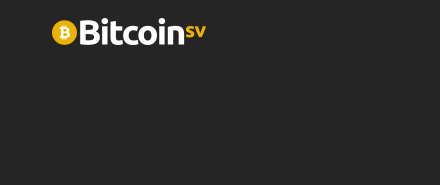Cambodia’s gaming market is unlike any other in the world. As a monopoly with easily identifiable risks, until this year it was basically a unipolar investment in Nagacorp almost entirely dependent on tourist flows from China to Phnom Penh. The more people that come to Cambodia, particularly megarich Chinese VIPs, the more money Nagacorp makes. As long as the tourist flows keep increasing, the value of the stock would rise, and so it has. Up 216% since June 2017 and 30% year to date, the stock is on fire. It looks much more risky now than the last time it was covered here.
Back in 2015 I called it a good 5-year hold for a small position:
Overall, NagaCorp is a good pick for a small position as a long term investment, say a 5 year hold. You’ll get high dividends, possibly a nice chunk of capital growth, but positions need to be slowly scaled in on dips.…NagaCorp should grow nicely from 2016 through 2020 as it absorbs more of the Macau junket market and expands. Just keep an eye on the monopoly issue, which shouldn’t become a problem in the foreseeable future, but is something to keep an eye on.
 It’s now 4 years later, the stock has climbed 62% plus dividends totaling 62 cents a share since then on what was around an 82 cent stock. That’s an additional 76% income gain. Looking at the risk concentrations here, profits should be taken on half of the position at least and stops placed for the rest. While it is true that Nagacorp risk has been diversified thanks to its opening up business in Russia later this year, in many other ways risks have increased significantly in its main Cambodian market, which is primarily the Chinese VIP market, primarily. This market could keep growing thanks to continued tourism growth, but the tailrisk is large enough to lock in profits and seek other opportunities.
It’s now 4 years later, the stock has climbed 62% plus dividends totaling 62 cents a share since then on what was around an 82 cent stock. That’s an additional 76% income gain. Looking at the risk concentrations here, profits should be taken on half of the position at least and stops placed for the rest. While it is true that Nagacorp risk has been diversified thanks to its opening up business in Russia later this year, in many other ways risks have increased significantly in its main Cambodian market, which is primarily the Chinese VIP market, primarily. This market could keep growing thanks to continued tourism growth, but the tailrisk is large enough to lock in profits and seek other opportunities.
The first thing to notice that is pretty confusing is its increased reliance on Chinese VIPs. The first half of 2017 had 52% of revenues coming from the VIP market and 44% from the mass market. As of the first half of 2018, there was a massive increase in VIP to 75% of revenues, and shrinking both in absolute and relative terms, of the mass market segment to 22%. Overall revenue increased 82.5%, but mass market revenues still decreased overall by 8.6%. Electronic games were responsible for the fall, down 41%, though mass market table games revenue was still up 36%.
The reason for the fall in mass market has nothing to do with the mass market itself though. Revenue fell by $60M because of a fee earned from selling licensing rights to certain investors to operate games in 2017. No more fees were earned from that this year so the segment collapsed 41%. Really then, what we’re talking about is inflation of its electronic games segment reporting last year when about 60% of its revenues came from the sale of licensing rights, one of the unfair privileges of a government monopoly operation. What’s happening overall then is Nagacorp’s true reliance on VIP is being exposed, rather than anything really changing all that much structurally from 2017 to 2018.
The VIP risk is further exacerbated by the fact that most of the growth from that segment comes from China. 30% of visitors to Cambodia come from China, so Nagacorp is very prone to any future Chinese VIP crackdown or business cycle turn.
But there are other major risks here going forward besides heavy reliance on VIP business and junkets. Ownership concentration is a serious issue. CEO Tan Sri Dr Chen Lip Keong owns a whopping 66% of all shares, 43.91% directly and 21.93% through a trust. (See page 19 here.) If conditions sour on the company, he’ll be the first to start selling before anybody else does, just like GVC insiders started selling shares on a discount that led to a 20% collapse in the stock on one day.
Another thing to pay attention to is the share count. Dilution has been significant, but hidden form the charts thanks to the recent run. Earnings increased 19.6%, but earnings per share were down 32%. The share count was diluted by 76% in a year, or a total of 1.88 billion new shares issued. That’s quite a lot of dilution, and shows a fair amount of brazenness from the company. They have taken advantage of the run to raise a substantial amount of capital. This is typical behavior from a government-protected monopoly showing a bit too much confidence in success that is not all its own. This is crony capitalism, and it’s a red flag.
Worse, Cambodia is becoming a more obvious dictatorship that could start to get out of control at any time. Politics in Cambodia is incredibly authoritarian and all it takes is one charismatic leader to whip up the masses and drive the country into the ground again. The recent arrest of the opposition leader and a trade dispute with the European Union because of dictatorial behavior are dangerous signs. A country that forbids its own people from gambling while hosting rich Chinese VIPs and monopolizing the industry in a such a blatant way could even constitute a moral argument against investing in Nagacorp at all, at least in terms of buying up newly issued capital. Buying shares on the secondary market is a different story.
But in any case there’s dirt everywhere in this Nagcorp operation and it could all fall quickly for any number of reasons. Say President Trump wants to impose sanctions or something or pressures China to cut off trade for whatever reason. Surely the neocons in the Trump Administration bitten by the sanctions bug (Iran and Venezuela are already victims) wouldn’t be averse to extending those sanctions to Cambodia and pressuring China to do the same through its dollar leverage. Nagacorp revenues are in US Dollars. This risk is mentioned in its last interim report, but it’s pretty much brushed aside.
Overall, Nagacorp is an entirely crony play, with lopsided risk coming from VIPs and political dangers. It could keep climbing especially if it has initial success in Russia but the risks aren’t worth it to keep holding on here. Taking profits now on half of the position with a hard stop 10% or so below current levels for the rest is probably a good move here.





